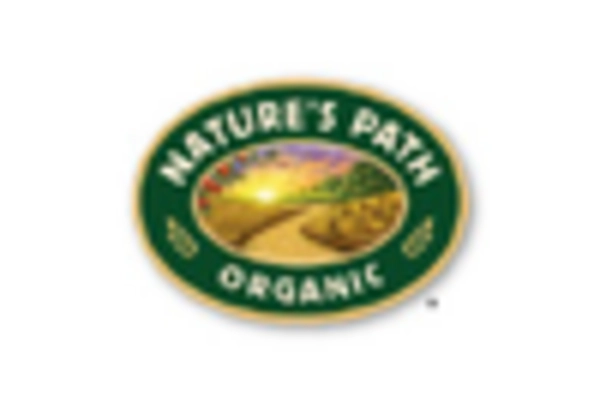Innovations in Food Processing
Advancements in food processing technologies are playing a crucial role in the evolution of the Buckwheat Market. Innovative techniques such as extrusion and fermentation are being employed to enhance the texture and flavor of buckwheat products. These innovations not only improve the sensory attributes of buckwheat but also extend its shelf life, making it more appealing to manufacturers and consumers alike. Furthermore, the development of ready-to-eat buckwheat meals and snacks is likely to cater to the growing demand for convenience in food consumption. As these processing innovations continue to emerge, the Buckwheat Market may witness a diversification of product offerings, potentially attracting new customer segments.
Nutritional Benefits of Buckwheat
Buckwheat Market is recognized for its rich nutritional profile, which includes high levels of protein, fiber, and essential minerals. This has contributed to its growing popularity in the Buckwheat Market, as consumers increasingly seek nutrient-dense foods. Research indicates that buckwheat is a good source of antioxidants and may help in managing blood sugar levels, making it appealing to health-conscious individuals. The rising awareness of these health benefits is likely to drive demand for buckwheat products, including cereals, snacks, and flour. As the Buckwheat Market continues to evolve, manufacturers may focus on highlighting these nutritional advantages to attract a broader consumer base.
Culinary Trends and Global Cuisine
The increasing interest in diverse culinary experiences is driving the popularity of buckwheat in various cuisines. As consumers explore global flavors, buckwheat is being incorporated into traditional dishes from different cultures, such as Russian blinis and Japanese soba noodles. This trend is evident in the Buckwheat Market, where there is a growing demand for buckwheat-based products that cater to international tastes. The versatility of buckwheat allows it to be used in both sweet and savory applications, appealing to a wide range of consumers. As culinary trends continue to evolve, the Buckwheat Market may see an expansion of product lines that reflect these global influences, potentially enhancing market growth.
Rising Demand for Gluten-Free Products
The increasing prevalence of gluten intolerance and celiac disease has led to a notable rise in demand for gluten-free products. Buckwheat Market, being naturally gluten-free, has emerged as a preferred choice among consumers seeking alternatives to traditional grains. This trend is particularly evident in the Buckwheat Market, where sales of gluten-free buckwheat flour and noodles have surged. According to recent data, the gluten-free food market is projected to reach substantial figures, with buckwheat products capturing a significant share. As consumers become more health-conscious, the Buckwheat Market is likely to benefit from this shift towards gluten-free diets, potentially leading to increased production and innovation in buckwheat-based offerings.
Sustainability and Organic Farming Practices
The increasing emphasis on sustainability and organic farming practices is influencing the Buckwheat Market. Consumers are becoming more aware of the environmental impact of their food choices, leading to a preference for sustainably sourced and organic products. Buckwheat Market, which requires fewer pesticides and fertilizers compared to other crops, aligns well with these consumer values. The organic buckwheat market is experiencing growth, as more farmers adopt organic practices to meet this demand. This shift towards sustainability not only benefits the environment but also enhances the appeal of buckwheat products in the marketplace. As the Buckwheat Market adapts to these trends, it may see a rise in organic certifications and eco-friendly packaging.

















Leave a Comment